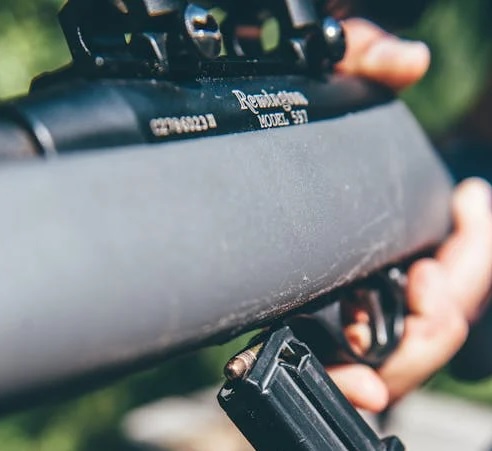Let’s talk about something that doesn’t get covered nearly enough: bullet weight in grains, and how it impacts a bullet’s performance, specifically one used for hunting.
Take .30-30 Winchester, for example. It’s one of the most popular hunting cartridges in the country and it has been for over 100 years. It might even be safe to say that the majority of sporting lever guns out there (excluding rimfires) are chambered in the old reliable .30-30. Here are two examples from our website:
Remington’s Core-Lokt .30-30 and Sellier & Bellot’s .30-30. Take a close look at these two rounds. They’re both .30-30 Winchester, they’re both loaded with soft point bullets, and they’re both intended specifically for hunters.
You could fire either of them interchangeably through any gun chambered in .30-30 Winchester, so what’s the difference?
It’s bullet weight. Remington’s is loaded with 170 grain bullets, and Sellier & Bellot’s with 150 grain bullets.
Again, both are for hunting but this makes a difference. We’ll cover it here.
What Are Grains?
The weight of a bullet is measured in grains. There are 7000 grains in a pound and 437.5 grains in an ounce, so if you’re getting the impression that grains are very miniscule, you’d be right. You can’t tell the difference between two bullets in terms of grains just by looking at them (except in extreme cases, such as looking at a tiny .22 vs. a big .50 cal bullet).
Bullet weight in grains varies wildly, from 38 grains for light, tiny .22 bullets to hundreds of grains for larger bullets, such as .45-70 Govt cartridges loaded with bullets that weigh more than 400 grains.
Fortunately, this is not a secret metric. Ammo manufacturers always (if not almost always) print the bullet weight in grains on the box. If you never noticed before, go take a look at a box you have lying around. The one exception here is shotshell ammo, in which case the payload is usually rated in ounces.
As a general rule, bullets with weights in grains below 100 are reserved for small and medium sized game (such as 38-grain .22 for squirrels or 55-grain .223 for coyotes) whereas bullets with weights above 100 grains are necessary to ethically dispatch larger game, like deer, bears, and other game. This of course is irrespective of cartridge, as weight is not the only thing that impacts the suitability of a bullet to be used for hunting - but it’s still important.

How Does This Impact Selection of Bullets for Hunting?
The main thing to take away from this is that, all else being equal, a bullet with a heavier weight will produce more stopping power on impact.
It’s easy enough to see the proof of this. Since weight is a product of mass, it is one of the factors directly used to determine muzzle energy, which in turn is related to stopping power. Just check one of your boxes - you will see that, among cartridges loaded with different bullet weights, almost in every instance, the heavier bullet weight will produce more muzzle energy.
Now, it’s also important to note that if you hold everything else (like powder charge) equal, the bullet with the heavier weight will also have less muzzle velocity. But that tradeoff comes at the expense of greater power, which is necessary to ethically kill game.
This does not necessarily mean that you need a larger, heavier bullet to kill your intended species. Sometimes a lighter weight and hotter propellant charge, which results in a flatter trajectory (as in the case of some lightweight, high-velocity .17 HMR rounds) is better for varmint control. You need to consider target species, range, and cartridge, in addition to bullet type (see below) as well as weight.
There is another consideration to be made here. Some states levy restrictions not only on the caliber that can be used to pursue certain species, but on bullet type as well as weight. Therefore, some rounds, though the cartridge may be legal in your state to take your target quarry, may not be loaded with compliant bullets - this is another reason to check both the box of ammo and your state’s hunting digest.
Consequently the Remington Core-Lokt ammo mentioned above would likely be more suitable for hunting slightly larger game than the Sellier & Bellot.
Does Bullet Weight Affect Anything Else?
Bullet weight does not just impact stopping energy. Since it is used to determine muzzle energy, bullet weight is one of the main factors impacting recoil energy.
That means that all else being equal (again, propellant charge is critical here) the bullet with the higher weight in grains will produce more recoil energy. The takeaway? Say you have two .223 cartridges, one loaded with 55-grain bullets and the other loaded with 80-grain bullets. The latter should produce much more recoil - something else to consider.
An Important Note on Bullet Weight and Type
Before you get it into your head that bullet weight is the most important thing to be looking for with respect to your hunting rounds, think again. It is only one of several things to keep in mind.
Probably the most important thing is the type of bullet used to load the cartridge. Recall that there are many different types: full-metal jacket, wadcutters, frangible bullets, and of course, hollow point, soft point, and ballistic tip ammo.
Only the latter are suitable for hunting because they are designed to expand and dump all of their energy quickly and efficiently, incapacitating game either instantaneously to within seconds (with proper shot placement).
Here’s what this means. Let’s say that you live in a state where .223 is legal for hunting deer. You have both 55-grain soft point ammo and 80-grain FMJ for long-range shooting. Only the former is suitable for dispatching deer. There are some (many, even) who would argue that 55 grains in .223 is inadequate for game of this size, but with proper shot placement (and assuming that that cartridge and bullet weight is legal in your state) only the soft point option is acceptable as a hunting round.
The long and short of it is this: only use soft point, hollow point, or ballistic tip ammo for hunting. It also means that FMJ ammo, and rounds like green tip 5.56 that are designed for penetration, not energy transfer, are never suitable for hunting.
On that note, consider ammo like FMJ or green tip 5.56. These are designed for stability and penetration, and do not expand. As a result there is a risk not only of overpenetration, but of wounding game. Worst, with poor shot placement, there is very little chance of recovering that game animal. Never use FMJ or ammo with penetrator inserts, like green tip 5.56 ammo, for hunting.
Another thing was touched on here, and that was shot placement. A light bullet with good shot placement on vitals is infinitely better than a heavier bullet that makes contact out of the vital zone. So again, while bullet weight is a determinant of stopping power, it’s not a panacea for sloppy shooting, either practically, ethically or legally.

Range is another consideration, though it has nothing to do with the bullet. Consider 7.62x39mm, which is lauded for its close range (say, within 100 yards) stopping power. You shouldn’t be taking a shot with this at targets in excess of 200 yards. Beyond that, the trajectory drops off a cliff and stopping power falls through the floor. Forget the issue of connecting at long ranges - at distance, the power will have fallen so precipitously, it’s dubious if it would get the job done. So that is something else to keep in mind.
Shop Shotgun and Rifle Ammo Here
Now that you know how bullet weight impacts suitability in your choice of hunting ammo, take a look through our collection of rifle and shotshell ammo. We carry many popular calibers and cartridges, and the top manufacturers are represented. Bookmark our page whenever you need to restock your ammo cans - Bucking Horse Outpost will be waiting.

